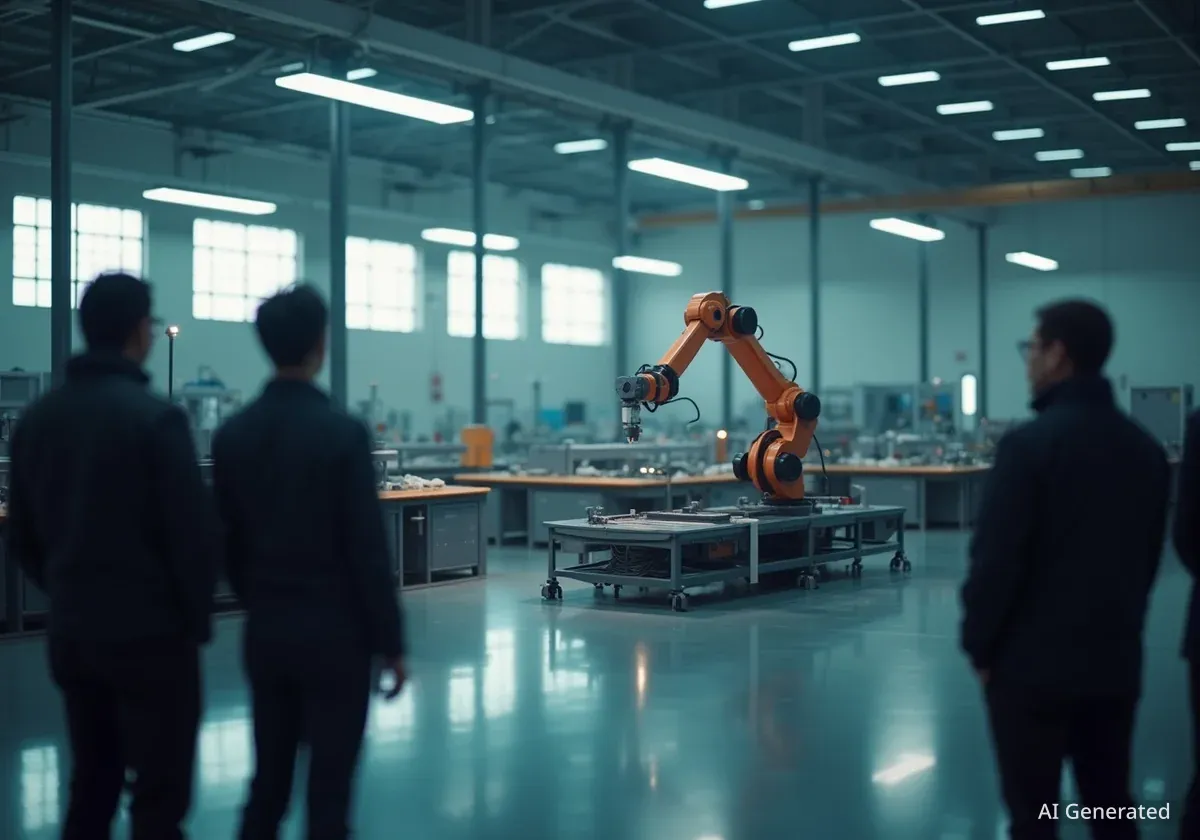Young Americans, particularly recent college graduates, are facing a significant challenge in securing employment, a trend confirmed by Federal Reserve Chair Jerome Powell. Top economists argue that this difficulty is not primarily driven by artificial intelligence replacing entry-level positions, but rather by a broader economic slowdown creating a 'low hiring, low firing' environment across the United States.
Key Takeaways
- Federal Reserve Chair Jerome Powell has acknowledged that young people and minorities are having a harder time finding jobs in the current market.
- Economists from major firms like UBS and Goldman Sachs identify a general hiring freeze as the main cause, not the adoption of AI.
- The US trend is unique, as youth unemployment rates in Europe and the UK have been falling, and youth employment in Japan is near all-time highs.
- Experts warn of potential long-term 'scarring effects' on Gen Z's earnings and wealth accumulation, similar to those seen after the Great Recession.
Federal Reserve Confirms a Challenging Job Market
The struggle for members of Generation Z to find their first career jobs has received validation from the highest levels of economic policy. Federal Reserve Chair Jerome Powell recently described the situation as an “interesting labor market,” highlighting a specific and troubling dynamic.
During a press conference, Powell noted that while layoffs remain low, so does the rate of new hiring. This creates a difficult environment for new entrants trying to break into the workforce.
“You’ve got a low firing, low hiring environment,” Powell stated, adding that “kids coming out of college and younger people, minorities, are having a hard time finding jobs.”
This assessment from the central bank chief gives weight to the anxieties felt by many young job seekers in 2025. It shifts the narrative from individual shortcomings to a systemic economic issue.
A Hiring Freeze, Not an AI Takeover
While public discussion often points to artificial intelligence as a disruptor of entry-level jobs, leading financial analysts argue the current situation is more conventional. According to a report from UBS, the challenges facing young American workers are not mirrored globally.
A Peculiar US Trend
Analysis shows that the spike in youth unemployment is largely an American phenomenon. Paul Donovan, chief economist at UBS, pointed out that young workers in the Euro area have a record-low unemployment rate, the rate in the UK has been falling, and youth employment participation in Japan is near historic highs. This global context makes it less likely that a universal technology like AI is the sole cause of the US problem.
Donovan wrote that it seems “highly implausible that AI uniquely hurts the employment prospects of younger US workers.” He concluded that the evidence “more convincingly fits a broader hiring freeze narrative, affecting new entrants to the workforce.”
This view suggests companies are not aggressively replacing workers with AI but are instead becoming more cautious about expanding their payrolls altogether, a behavior that disproportionately impacts those with the least experience.
The Data Behind a Slow Labor Market
Economists at Goldman Sachs provided data to support the hiring freeze theory. Their research focuses on a concept called “job reallocation,” which is the rate at which jobs are created and eliminated in an economy. This metric has been declining since the late 1990s.
Most job changes now occur through “churn,” where workers move between existing jobs. According to Goldman Sachs, this churn rate was well below pre-pandemic levels in 2025, a pattern observed across most industries and states.
Job Searches Are Taking Longer
The slowdown in hiring directly impacts how long it takes to find a job. In 2019, an unemployed young worker took an average of 10 weeks to find a new position. Today, that average has increased to 12 weeks, according to Goldman Sachs economist Pierfrancesco Mei.
This decline in labor market dynamism means fewer open doors for new graduates. When companies are not actively creating new roles or replacing departing employees, the competition for the few available entry-level positions becomes much more intense.
Long-Term Economic Consequences for Gen Z
Starting a career during a significant economic slowdown can have lasting negative consequences, a phenomenon economists call “scarring effects.” Historical data shows that individuals who graduate during recessions often face long-term disadvantages.
A briefing from Stanford University on the Great Recession found that college graduates who entered the job market between 2007 and 2011 earned less than their peers who graduated in stronger economic times. These negative effects on earnings persisted for 10 to 15 years.
Experts warn that the current generation of graduates could face similar challenges. Delays in starting a career can impact lifetime earnings, the ability to purchase a home, and overall wealth accumulation. This difficult start can set back an entire generation's financial progress.
Alternative Paths and the Lingering AI Question
The hiring freeze appears to have a more pronounced effect on recent college graduates. The UBS analysis suggests that less-educated workers, who may have entered the labor force at a younger age, could have secured employment before the 2025 slowdown began.
This has also coincided with a long-term decline in college enrollment and a rising interest in trade professions. Many young people are opting for blue-collar careers, finding opportunities for entrepreneurship and high earnings without the burden of student loan debt.
Regarding artificial intelligence, Powell remains cautious. He acknowledged that AI “may be part of the story” but insisted it is not the primary driver of youth unemployment. He conceded that companies might be using AI for tasks previously handled by recent graduates but stated there is “great uncertainty” about the scale of this impact.
“The overall job finding rate is very, very low,” Powell concluded. “If layoffs begin to rise, there won’t be a lot of hiring going on.”
This final point underscores the precariousness of the situation. While the economy is currently characterized by low layoffs, any shift toward job cuts could severely worsen the already difficult landscape for young Americans trying to launch their careers.





